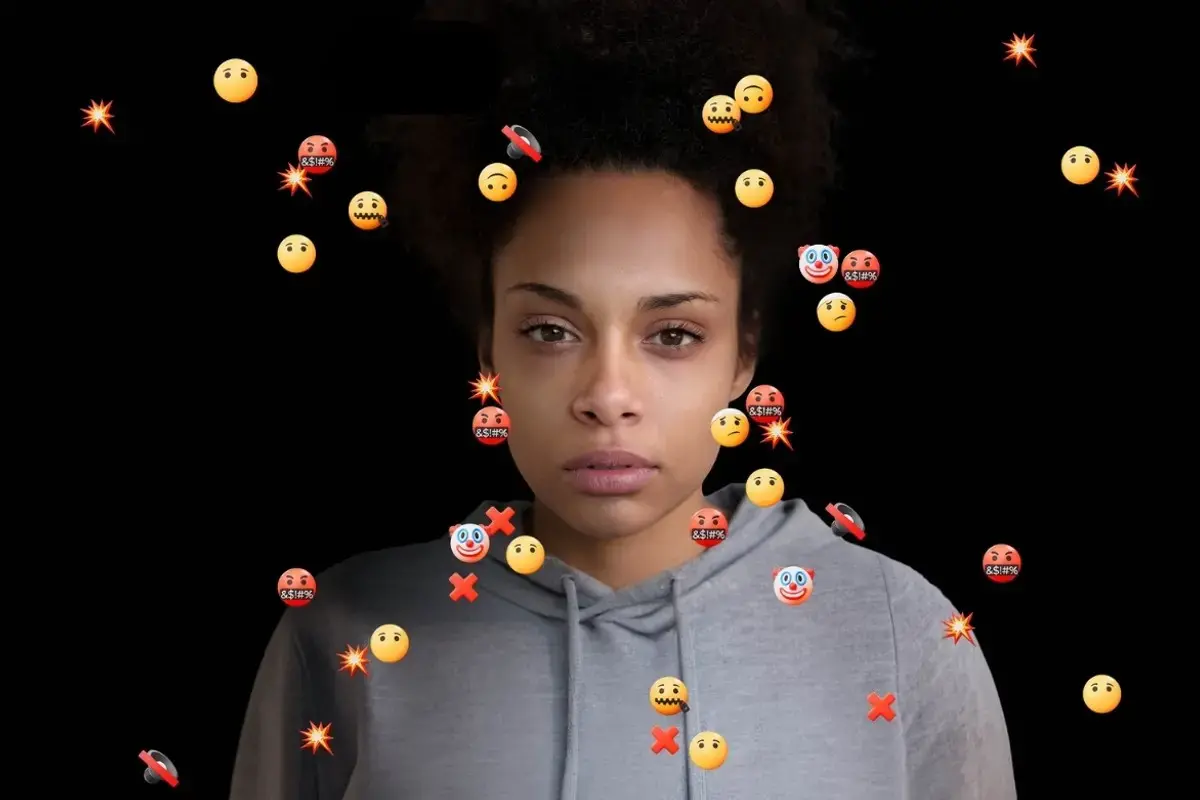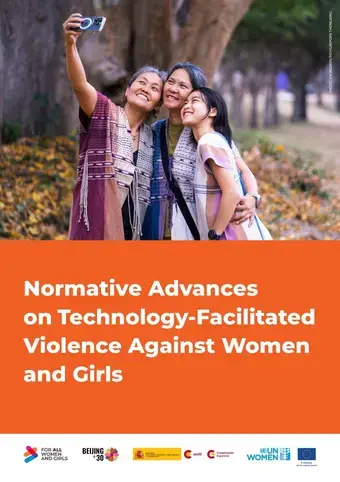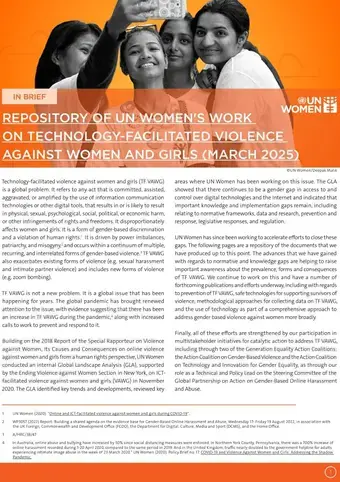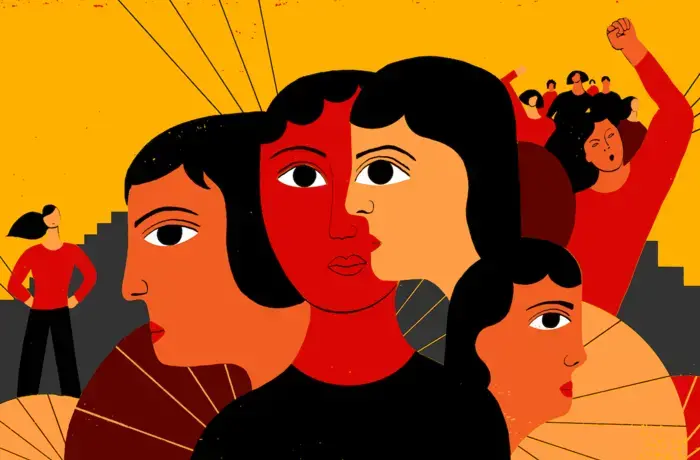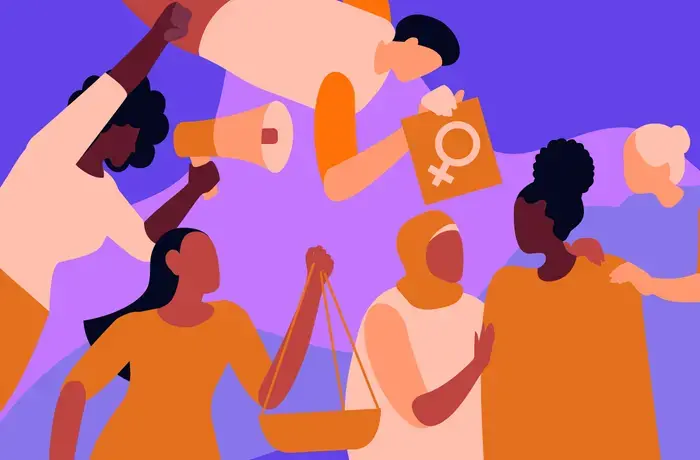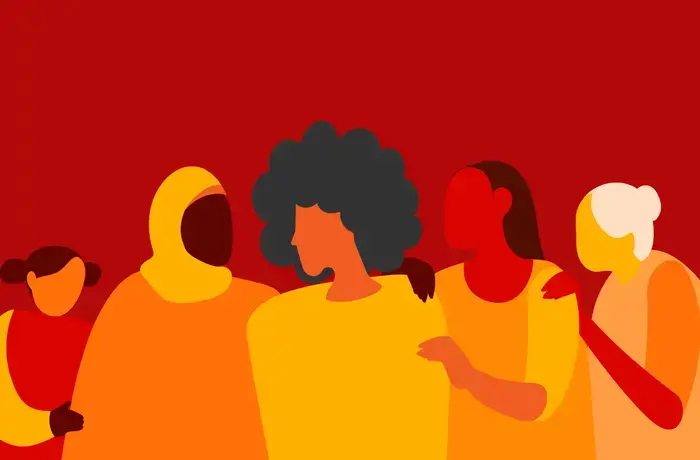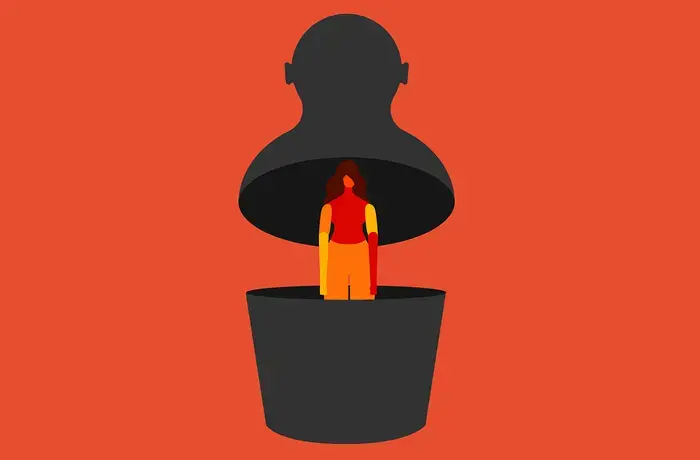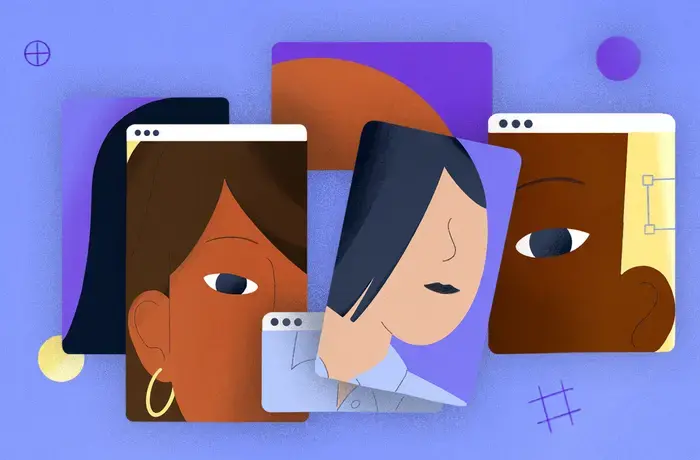Online safety 101: What every woman and girl should know
The digital world promised connection and empowerment – but for millions of women, it has become a hunting ground.
Schoolgirls are grappling with fake nude images of themselves circulating on social media. Female business leaders are increasingly targeted with deepfakes and coordinated harassment campaigns. And women in the public eye face torrents of abuse: one in four women journalists and one in three women parliamentarians worldwide report online threats of physical violence, including death threats.
Different lives, different contexts, same pattern. This is digital abuse – one of the fastest-growing forms of gender-based violence, and it is spreading across borders and platforms, threatening women and girls everywhere – online and offline.
Experts say the problem is vast, with anywhere between 16 and 58 per cent of women worldwide reporting online violence or harassment, and now new technologies like artificial intelligence are making things worse. Image-based abuse is exploding, with an estimated 90 to 95 per cent of online deepfakes depicting women in sexualised ways.
The abuse doesn’t just stay online. Online abuse can shatter mental health, wreck relationships, and derail careers in seconds. It can also spill into real life, escalating into stalking or physical violence, even death. Digital violence silences women and girls who should be free to speak.
UN Women warns that this new front line of violence against women is intensifying and spreading fast. Recognising it and stopping it is urgent. While perpetrators of abuse and tech platforms that allow, advertise, and profit from digital abuse must be held accountable, women and girls also need information and tools to spot the early signs of abuse, take action, and reclaim their digital space.
What is digital abuse?
Digital abuse (also called technology-facilitated violence against women and girls) covers a wide spectrum of violent behaviours. It can look like:
- Online harassment and cyberstalking: repeated, unwanted messages, cyber-flashing, creepshots, surveillance such as tracking your location, or monitoring your activity.
- Image-based and deepfake abuse: sharing private images without consent, or creating AI-generated sexual content through morphing, splicing, or superimposing photographs and videos to create deepfakes. These are sometimes called revenge porn.
- Violent pornography: images of sexual aggression and gendered violence in pornography widely available on the internet which is normalizing and perpetuating violence against women and girls.
- Trolling, threats, and blackmail: abusive comments designed to silence or intimidate, gender-based hate speech, threatening to share personal information, photos or videos of someone.
- Digital dating abuse: using apps or social media to control, pressure, or isolate a partner.
- Online grooming: using digital platforms to build trust or a relationship with someone – often a minor – with the intention of sexual exploitation and trafficking.
- Doxxing: publishing personal information online to endanger or intimidate.
- Identity theft: impersonation and the creation of fake profiles.
- Control of access: restricting or monitoring a woman’s access to shared devices, internet, or power sources.
What are the consequences of digital abuse and online violence?
From Manila to Mexico City, from Nairobi to New York City, women are on the front lines of digital violence. It can happen in rural or urban settings, and across income brackets. From anonymous threats to abuse and control by intimate partners, it can take many shapes and forms.
For example, women living low income or rural households often share devices or depend on others for access to phones, computers, or the Internet. In these settings, perpetrators restrict or monitor access to devices or power sources, and exploit limited digital literacy to commit both economic and digital violence.
The targets are familiar: young women, politicians, journalists, women human rights defenders, and activists often singled out with sexist, racist, or homophobic slurs. For migrant and racialized women, those with disabilities, and LGBTQ+ people the abuse can be even more extreme, combining misogyny with other forms of hate and exclusion.
And it is getting worse. UN Women research shows that aided by AI-powered technology, these abuses are fast growing in scale and sophistication. The consequences are grave and reach far beyond the screen:
- In the Philippines, an analysis revealed that 83 per cent of survivors experienced emotional harm, 63 per cent sexual assault, and 45 per cent physical harm linked directly to online abuse.
- In Pakistan, online harassment has been tied to femicide, suicide, physical violence, job loss, and the silencing of women and girls in online spaces.
- In the Arab states, 60 per cent of women internet users reported exposure to online violence.
- In Africa, 46 per cent of women parliamentarians said they had received online attacks.
- In Latin America and the Caribbean, 80 per cent of women in public life reported restricting their online activities out of fear of abuse.
The pattern is clear: digital abuse has real-world consequences. It is increasingly linked to violent extremism, silences women’s voices in politics and media, and can even lead to femicides when technology becomes a weapon for stalking or coercion.
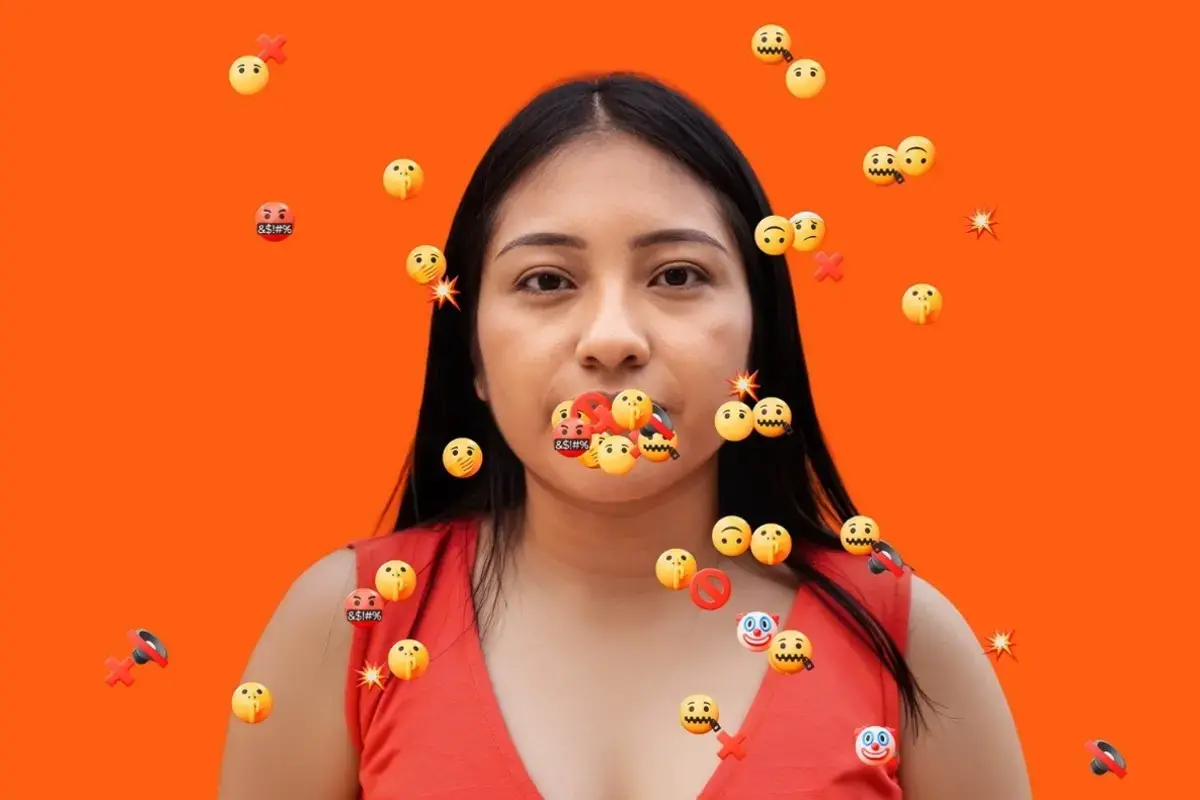
How to spot the signs and shield yourself from digital abuse
Now that you know what digital abuse is, the next step is learning how to spot the red flags in your own feed and devices.
Is it really abuse if it starts small?
Yes – digital abuse often begins with “little things”: a partner demanding your password or coercing you to share images that make you feel uncomfortable, constant check-ins, or a person you know sending inappropriate messages, or even anonymous comments that make you feel uncomfortable or afraid.
What should set off alarm bells?
- Threats to share private photos if you don’t comply with demands.
- Controlling behaviour over conversations and contacts you may have, for example, on your phone.
- Harassing and abusive comments or DMs that keep coming even after you block someone.
- Fake or doctored images of you suddenly appearing online.
- Impersonation, exclusion, or smear campaigns in online groups.
Why does it feel so isolating?
Abuse thrives on silence and the anonymity of perpetrators. It can make you doubt yourself, but recognising the pattern early is one of the strongest ways to stop it.
I’ve spotted the signs – what now?
There are practical steps you can take immediately:
- Block and report. Where available, use platform tools to cut off contact and file a report. It’s no coincidence that one of the most-asked questions online is, “how to report harassment on Instagram” – millions of women are searching for the same answers.
- Stop the spread. Use tools available to remove private images and videos shared without consent, such as Take it down and Stop non-consensual image-abuse.
- Save the evidence. Screenshots, links, time stamps – keep a record. If you choose to report, this information is vital.
- Tell someone you trust. Don’t carry it alone. Share what’s happening with a friend, family member, or organisation you trust.
- Secure your accounts. Enable two-factor authentication, review privacy settings, and check your devices for spyware or tracking apps.
- Seek help. Many countries now have hotlines, NGOs, or police units trained to respond to digital violence. Check out the resources in the section below.
What if I see abuse happening to someone else?
If you see abuse happening, don’t stay silent. Research shows that when bystanders speak up or report harmful behaviour, it discourages further attacks and helps platforms detect abuse faster. Small actions – a report, a supportive comment, or sharing a resource – can make a big difference.
Can I make my feed safer?
Yes. Most platforms have safety features that let you filter comments, block abusive accounts, and limit who can tag you. Use them. They’re designed to give you back some control.
And if I blame myself?
Don’t. Abuse is never your fault. The responsibility always lies with the perpetrator, not the survivor.
Building safer digital spaces together
Laws are catching up to this new reality. In Mexico, the law Ley Olimpia recognises and punishes digital violence. In the United States of America, the Take It Down Act mandates the removal of non-consensual intimate images. In the United Kingdom, the Online Safety Act obliges platforms to protect users from online harm.
Your rights vary depending on where you live, but knowledge is power. Legal recourse, though uneven, can be a critical tool for survivors – and advocacy continues to strengthen protections worldwide.
But laws alone aren’t enough. Perpetrators must be held accountable, platforms must design safety by default, and women and girls everywhere need stronger digital literacy and resilience to recognise and report abuse.
What can you do?
- Call it out. If you see abuse happening, don’t ignore it. Support the target.
- Share resources. Direct friends to survivor hotlines, legal guidance, and this article.
- Take the quiz. Test your ability to spot the signs of abuse and share it to help others stay safe.
Need help?
If you or someone you know is experiencing online harassment or digital abuse, help is available. These organisations and directories can connect you to trusted regional and global support services:
Note: UN Women is not responsible for the information provided by external sources.
- The Online Harassment Field Manual – Help Organisations Directory is a specialist directory listing regional and international organisations that help journalists, activists, and others facing online abuse, offering digital safety advice, referrals, and emergency contacts.
- Cybersmile Foundation provides a global service that offers emotional support and signposts users experiencing cyberbullying or online abuse to helpful resources.
- Take it down assists with removing online nudes.
- Stop non-consensual image-abuse helps victims of revenge porn.
- Chayn Global Directory offers a curated list of organisations and services that support survivors of gender-based violence, both online and in person, with options across multiple regions and languages.
- The NO MORE Global Directory is a worldwide directory of sexual violence and domestic abuse helplines and specialist services, covering nearly every country.
- The International Women’s Media Foundation — Online Violence Response Hub provides training, digital safety consultations, and emergency assistance for journalists and women working in media who face online harassment.
- Child Helpline International provides child and youth helplines worldwide
- Access Now Digital Security Helpline (24/7) provides rapid digital-security support for civil society, journalists, human rights defenders.
- Lila helpline connects users to helplines and local services for gender-based violence.
If you feel unsafe or in immediate danger, contact local emergency services or law enforcement in your country.
Reclaiming our digital world
Online spaces should be safe for every woman and girl. The same technology that can amplify women’s voices can also be weaponised against them. By staying informed, calling out abuse, and standing together, we can reclaim the digital world and make it a safe space where equality, safety, and respect can thrive.
16 Days of Activism: #NoExcuse for online abuse
Online and digital spaces should empower women and girls. Yet every day, for millions of women and girls the digital world has become a minefield of harassment, abuse, and control.
From 25 November to 10 December join the UNiTE campaign and take action to stop digital abuse against women and girls.

